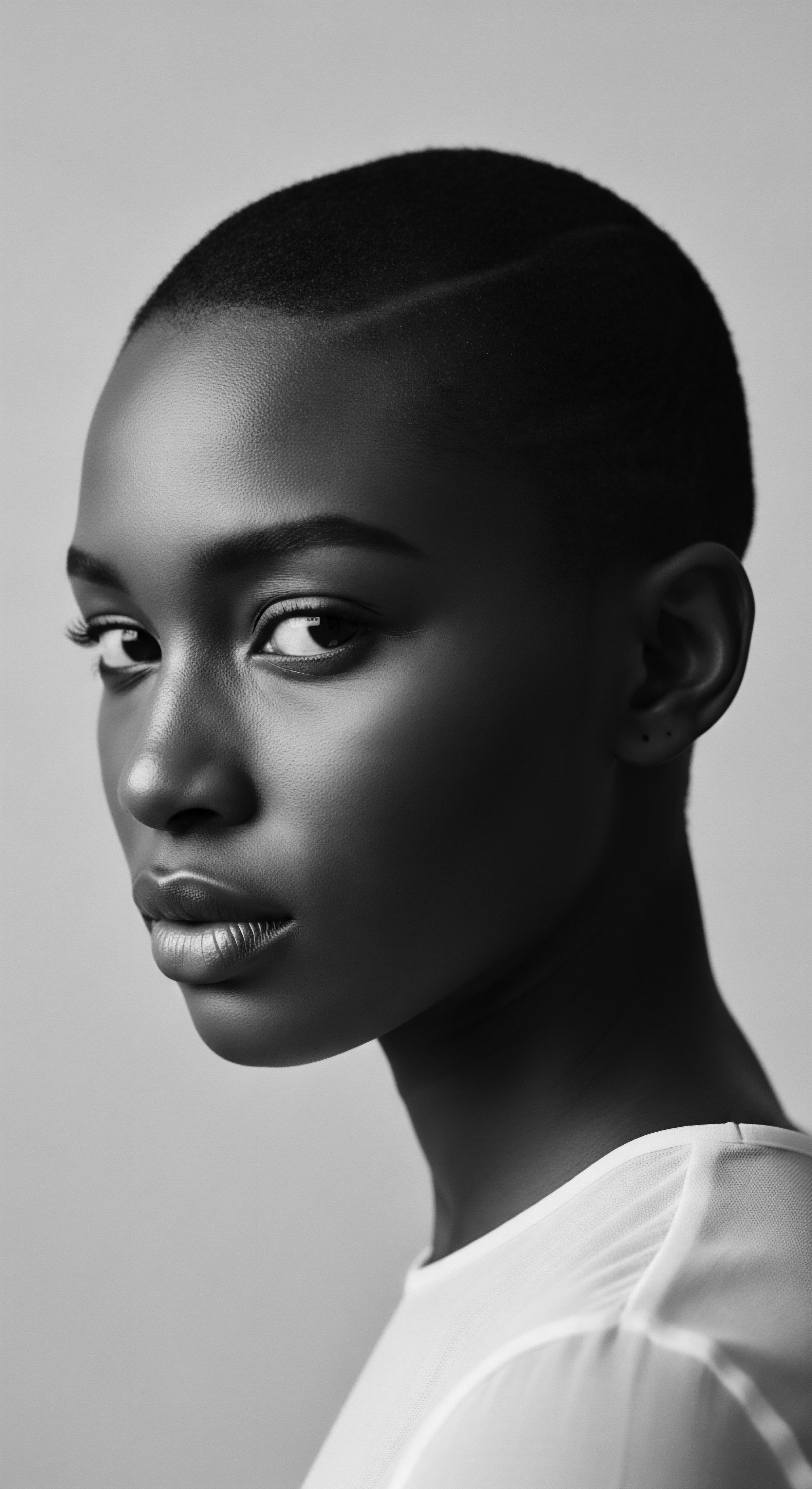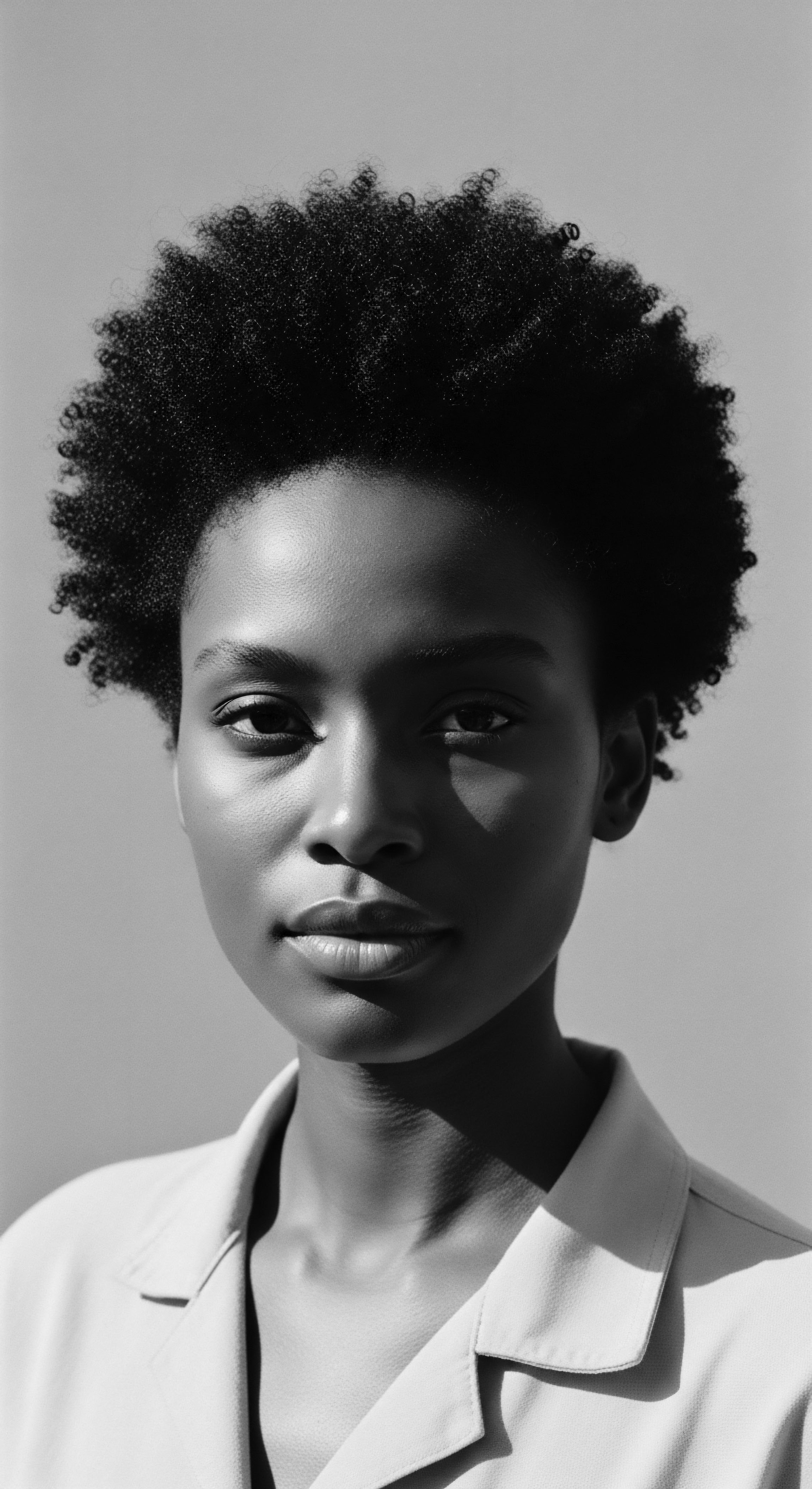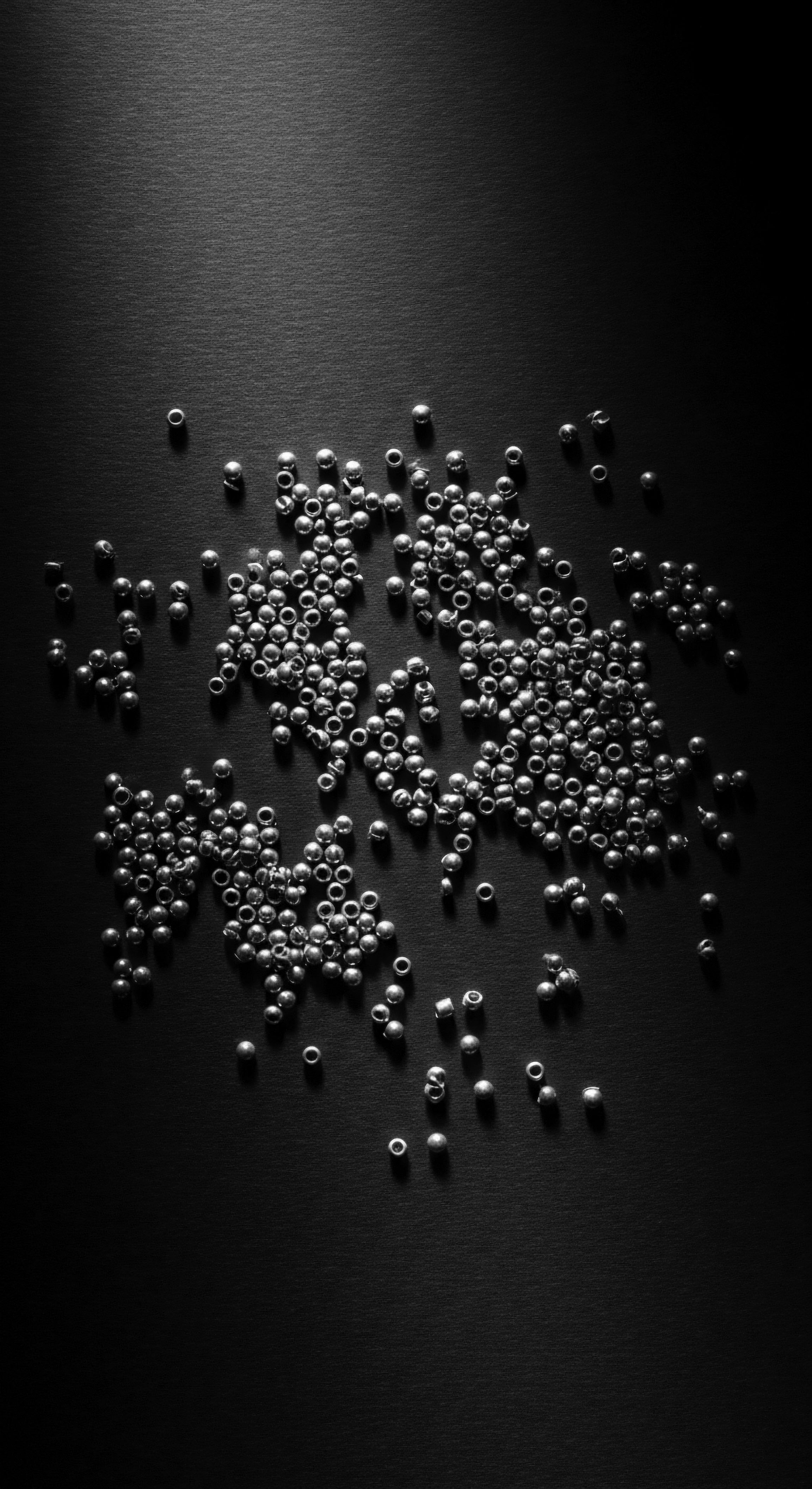
Roots
Consider for a moment the very strands that spring forth from your scalp. They are not merely protein filaments; they carry the whispers of generations, the resilience of journeys untold, and the brilliance of ancient wisdom. Each coil, each curve, each tightly bound curl holds a story, a memory of care passed down through time. To inquire if black seed oil can truly fortify textured hair is to open a sacred text, to seek understanding in the age-old dialogue between botanical bounty and our ancestral lineage.
This exploration of Nigella Sativa, known through epochs as black seed, invites us to look beyond fleeting trends and anchor ourselves in the enduring knowledge that sustained hair vibrancy long before modern laboratories existed. The question itself becomes a portal, linking the elemental biology of a single strand to the sprawling archives of inherited practice.
The intrinsic nature of textured hair, with its unique follicular structure and growth patterns, distinguishes it from other hair types. Each helix emerges from an elliptical follicle, dictating its characteristic curl and presenting particular needs for moisture, strength, and gentle handling. This fundamental truth was known, perhaps intuitively, by those who tended to hair in ancient civilizations.
Their methods, though lacking electron microscopes, were rooted in deep observational acumen and a reverence for the natural world. They understood, through observation and empirical knowledge, that hair health was intrinsically linked to scalp vitality and the nourishment drawn from their environment.

Understanding the Textured Hair Blueprint
Textured hair, a gift of genetic inheritance, exhibits a range of curl patterns from soft waves to tight coils. The distinct shape of the hair follicle, often asymmetrical, influences how the keratin strands are formed and emerge. This helical pathway creates natural points of weakness at the curves, making textured hair inherently prone to dryness and breakage if not handled with profound thoughtfulness.
The cuticle, the hair’s outer protective layer, tends to be more raised in textured strands, allowing moisture to escape more readily. This inherent characteristic underscores the long-standing need for substantive conditioners, rich oils, and protective styles throughout ancestral care traditions.
Textured hair, with its unique follicular architecture and cuticle structure, necessitates specialized care rooted in deep understanding.

Ancestral Classifications and Their Echoes
Before the advent of numeric hair typing systems, communities across Africa and the diaspora employed their own descriptive lexicons for hair. These distinctions often transcended mere curl pattern, embracing attributes like texture, softness, and the hair’s receptiveness to styling and moisture. Hair was categorized by its feel, its malleability, and its spiritual significance. An elder might speak of hair that was “like the new moon,” referring to its tight, pristine coils, or hair that had the “softness of river moss,” indicating its delicate, fine texture.
These were not just descriptors; they were acknowledgments of hair’s living presence and its connection to the natural world. The understanding of what could fortify these diverse textures, often through the application of plant-derived oils and butters, was passed through generations. The inherent strength of hair was not seen as a given, but as a quality requiring constant tending, a relationship of reciprocal nourishment.
Consider the practices of the Himba people of Namibia, whose iconic Otjize Paste, a mixture of ochre, butterfat, and aromatic herbs, not only adorned the hair but also served as a protective sealant against the harsh climate, fortifying the strands and scalp. While not black seed oil directly, this practice mirrors the deep ancestral knowledge of using natural emollients for hair protection and resilience, embodying a similar spirit of conscious care. The consistent application of these rich substances speaks to an intuitive grasp of the need to compensate for the natural tendencies of textured hair towards dryness and fragility.

Ritual
The concept of hair care as a ritual, rather than a mere chore, is deeply ingrained in the lineage of textured hair. From ancestral anointing ceremonies to communal braiding sessions, these acts were steeped in intention, connection, and a profound respect for the strands. It is within this historical context that we consider black seed oil, Nigella Sativa, not as a modern discovery, but as a botanical ally whose properties might align with the wisdom of those ancient care practices. The very act of applying an oil to the hair and scalp, working it through each segment, replicates gestures performed for centuries, binding us to a continuum of care that prioritizes resilience and vitality.

The Anointing of Strands
Long before commercial products dominated shelves, African and diasporic communities relied upon locally sourced botanical elements to care for their hair. Oils rendered from shea nuts, palm kernels, or even specific seeds held pride of place in daily regimens. These were applied not just for shine, but for their perceived medicinal and fortifying properties.
The consistent application of oils to the scalp and hair provided a protective barrier, a layer of defense against environmental aggressors and mechanical stress, particularly important for the delicate architecture of textured hair. Could black seed oil, with its rich historical presence in regions where textured hair has always been prominent, be a continuation of this ancestral oiling tradition?

Has Black Seed Oil Been Part of Traditional Hair Strengthening Practices?
The historical record shows black seed oil’s extensive use in traditional medicine and cosmetics across North Africa, the Middle East, and South Asia for millennia. Its documented applications range from digestive aids to skin treatments. While direct historical texts specifically detailing its use solely for strengthening textured hair in sub-Saharan African contexts might be less common, its widespread use in regions with diverse hair textures suggests a broader application of its known properties.
The ancient Egyptians, for instance, were meticulous in their self-care rituals, and black seed oil, found among artifacts like those in King Tutankhamun’s tomb, points to its high esteem for well-being and appearance (Tariq & Sultan, 2015). This suggests a historical continuity of valuing natural ingredients for their holistic benefits, including those that would contribute to hair health.
Ancestral hair care rituals, steeped in natural ingredients and communal bonds, offer a historical lens through which to view black seed oil’s potential.
The fortifying power of these ancient oils lay in their ability to penetrate, protect, and soothe. For textured hair, prone to dryness and breakage, a consistent oiling practice reduces friction, softens the strands, and contributes to a healthier scalp environment. When considering black seed oil, one considers its potent Antioxidant compounds, such as thymoquinone, alongside its anti-inflammatory and antimicrobial properties.
These characteristics align with the perceived benefits sought by ancestral practitioners who used plant-derived remedies to soothe irritated scalps, ward off fungal issues, and reduce hair shedding. The connection is less about a direct historical directive for black seed oil on textured hair, and more about its inherent properties fitting seamlessly into the established logic of ancestral hair care that prioritized natural emollients and herbal remedies for resilience.
- Ancient Egyptian Practices ❉ Valued various oils, including potentially black seed, for cosmetic and medicinal uses, reflecting a holistic approach to well-being that included hair and scalp.
- Traditional African Hair Greasing ❉ The practice of applying rich, natural butters and oils to the scalp and hair has been a cornerstone of textured hair care, protecting strands and promoting growth.
- Ayurvedic Traditions ❉ Black seed oil is mentioned in various herbal texts for its beneficial properties, often combined with other oils for hair and scalp wellness.
The crafting of traditional hair oils involved infusing natural carrier oils with herbs and seeds. These formulations were not arbitrary; they were honed over generations, their efficacy proven through lived experience. The application of these mixtures was often accompanied by gentle massage, stimulating circulation to the scalp, a practice known to support hair vitality.

Relay
To truly understand how black seed oil might bolster textured hair, we must bridge the expansive chasm between ancient wisdom and contemporary scientific inquiry. The journey from traditional observation to molecular explanation is a compelling one, allowing us to affirm ancestral knowledge with the language of modern discovery. The question of black seed oil’s fortifying abilities is not a simple yes or no; it delves into the intricate interplay of its chemical composition with the unique biology of textured strands, all while honoring the historical context of its veneration.

The Chemical Cipher of Black Seed Oil
At the heart of black seed oil’s esteemed reputation lies Thymoquinone, its most researched active compound. This powerful constituent possesses significant antioxidant and anti-inflammatory attributes. For textured hair, which often contends with scalp inflammation due to various styling practices or environmental stressors, these properties are particularly pertinent.
A healthy scalp provides the foundational environment for robust hair growth, and any agent that reduces inflammation and oxidative stress at the follicular level contributes to overall hair vitality. The ancestral understanding of certain plants as “soothing” or “healing” finds its scientific parallel in these precise biochemical actions.
Beyond thymoquinone, black seed oil contains a spectrum of beneficial fatty acids, including Linoleic Acid and oleic acid, along with various vitamins and minerals. These components are nourishing for both the hair shaft and the scalp. Fatty acids are essential for maintaining the integrity of the hair’s lipid barrier, contributing to moisture retention and flexibility – qualities that are especially important for textured hair, which can be prone to dryness. By helping to seal the cuticle, these lipids can reduce water loss from the hair shaft, thereby enhancing its pliability and reducing the likelihood of breakage.
Black seed oil’s biochemical profile, particularly its thymoquinone content, offers scientific grounding for its fortifying potential.

Can Black Seed Oil Mitigate Breakage in Coiled Strands?
The inherent bends and twists in textured hair strands create areas where the cuticle is naturally more lifted, making the hair susceptible to damage from mechanical friction or environmental exposure. Breakage is a pervasive concern for many with textured hair. Black seed oil’s ability to reduce inflammation and oxidative stress on the scalp indirectly supports stronger growth from the follicle. Furthermore, its emollient properties, derived from its fatty acid composition, can help to smooth the cuticle layer when applied to the hair shaft.
This smoothing action reduces friction between strands and during manipulation, thereby diminishing the chances of physical damage and subsequent breakage. The oil provides a slip, a lubrication that helps detangling and styling, practices that traditionally often contributed to breakage.
A study published in the Journal of Dermatology & Dermatologic Surgery (Mekawy et al. 2018) examined the efficacy of a topical herbal oil mixture containing black seed oil for hair shedding. While the study focused on effluvium, it observed improvements in hair density and reduction in shedding, suggesting that black seed oil’s properties can support scalp health and follicle function, indirectly contributing to hair strength and reduced loss.
This scientific validation echoes the long-held ancestral belief in the power of botanical remedies to address hair concerns, grounding the narrative in tangible data. The ancestral reliance on sustained application, much like the duration of a clinical trial, suggests an intuitive grasp of the time needed for natural remedies to yield results.
| Aspect Mechanism of Strength |
| Ancestral Understanding (Heritage) Intuitive knowledge of "feeding" the hair, protecting it from harsh elements, and promoting vitality through natural oils. |
| Modern Scientific View (Black Seed Oil) Anti-inflammatory, antioxidant properties (thymoquinone) support scalp health; fatty acids reinforce lipid barrier, reducing breakage. |
| Aspect Application Ritual |
| Ancestral Understanding (Heritage) Communal oiling, massage, often linked to spiritual or ceremonial practices; consistent, patient application. |
| Modern Scientific View (Black Seed Oil) Targeted application for scalp stimulation, pre-poo treatments, or leave-in conditioning to leverage active compounds. |
| Aspect Desired Outcome |
| Ancestral Understanding (Heritage) Resilience, sheen, symbolic health, communal bonding through care, hair as a marker of identity. |
| Modern Scientific View (Black Seed Oil) Reduced shedding, increased density, improved strand flexibility, healthy scalp microbiome. |
| Aspect Both historical and contemporary practices align on the aim of fortifying hair, albeit through different explanatory frameworks. |

Addressing Scalp Wellness for Stronger Hair
A truly robust strand of hair begins with a healthy scalp, a living terrain where the hair follicle resides. Black seed oil’s antimicrobial properties can help maintain a balanced scalp microbiome, deterring the growth of certain fungi or bacteria that might contribute to conditions like dandruff or folliculitis. Such irritations can impede healthy hair growth and lead to weakened strands.
By nurturing the scalp, black seed oil fosters an optimal environment for follicles to produce resilient hair, a connection well understood by ancestral healers who prioritized remedies for scalp issues. The continuity of this knowledge, from the ancient use of poultices to modern research, speaks to a timeless truth.
- Anti-Inflammatory Action ❉ Thymoquinone helps calm scalp irritation, providing a stable foundation for hair growth.
- Antioxidant Protection ❉ Safeguards scalp cells from environmental damage, preserving follicular integrity.
- Antimicrobial Support ❉ Helps maintain a balanced scalp environment, reducing factors that could lead to weakened hair.

Reflection
The journey through black seed oil’s potential to fortify textured hair is more than a scientific inquiry; it is a resonant conversation with our heritage. It speaks to the enduring wisdom of those who came before us, guardians of knowledge etched in practices and remedies, a continuous living archive. The ‘Soul of a Strand’ ethos reminds us that our hair is a vibrant testament to resilience, beauty, and identity.
When we reach for an ancestral oil like black seed, we are not simply applying a substance; we are participating in a timeless ritual of care, acknowledging the deep lineage of our textured crowns. Each strand, nurtured by this ancient botanical ally, carries forward a legacy of strength, whispering tales of adaptability and an unbroken connection to the earth’s profound wisdom.

References
- Tariq, M. & Sultan, S. (2015). Nigella sativa L. (Black Seed) ❉ A Review on its Chemical Constituents and Pharmacological Properties. Asian Pacific Journal of Tropical Biomedicine, 5(12), 1-9.
- Mekawy, M. et al. (2018). Efficacy of a Topical Herbal Oil Mixture in the Treatment of Hair Shedding. Journal of Dermatology & Dermatologic Surgery, 22(1), 38-42.
- Bukhari, A. et al. (2020). Therapeutic Potential of Nigella sativa for Various Hair Disorders. In ❉ Essential Oils in Food Preservation, Flavor and Safety. Academic Press.
- Salehi, B. et al. (2019). Nigella Sativa L. (Black Cumin) ❉ From Traditional Uses to its Novel Applications. Molecules, 24(10), 1957.
- Dweck, A. C. (2007). The Hair and Scalp Encyclopedia ❉ A Compendium of Hair and Scalp Conditions. CRC Press.
- Pittman, A. G. (1981). Hair Structure and Properties. Marcel Dekker.
